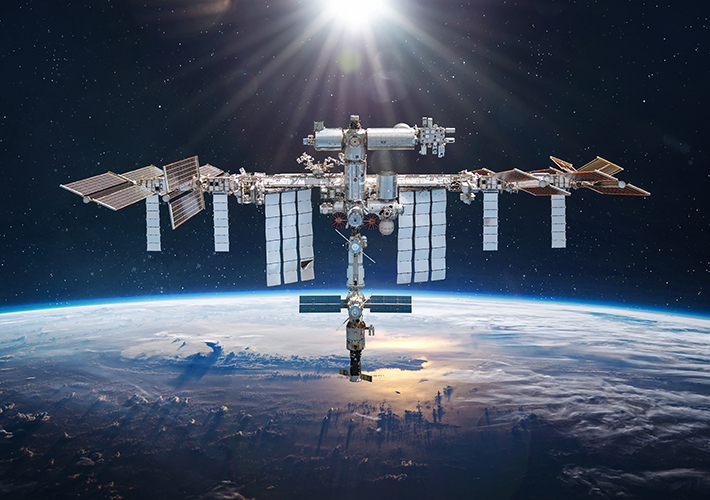Standards in Zero Gravity

Standards in Zero Gravity
Few things capture the imagination more than outer space. From mythological observations of the heavens to the fantastic worlds of science fiction, the stars have long hovered in our minds as a site of mystery and wonder.
Much of our enchantment with space has come precisely because of its mystery, its remoteness and unfamiliarity. Ray Bradbury suggested that our passion for space was rooted in a broader human condition of “romance” with the unknown. As he once noted, “We find, we push the edge of science forward, and I think we romance on beyond that into the universe ever beyond.”
READ MORE: The Launch of a New Era for Space
While Bradbury’s desire to understand the stars remains as current as ever, today companies such as Axiom, SpaceX, and Blue Origin are making spaceflight for private citizens look less and less like a romantic dream.
There is a growing need for safety and quality standards for commercial space travel, along with recommended practices for crew and medical qualifications for participants during their journey. ASTM International’s commercial spaceflight committee (F47) has been centrally involved with the effort to develop such standards.
As it turns out, their work is even pushing beyond our earthly horizon.
Making Space For Standards
On April 9, 2022, the first all-private team of astronauts ever launched arrived at the International Space Station (ISS) for an extensive scientific mission. During their stay, flight commander Michael López-Alegría somehow still found time for an ASTM executive committee meeting.
López-Alegría, a retired NASA astronaut and vice president of business development for Axiom, is the chair of F47. Since publishing their first standard in 2019, the committee has worked to develop practices for passenger medical qualifications, data exchanges between space operators and the Federal Aviation Administration, and the design of orbital and suborbital space vehicles.
In addition to the important work of the committee here on the ground, their efforts have now spread to outer space. On April 14, ASTM hosted a livesteam from the ISS featuring López-Alegría. During the appearance, he chaired a meeting, jokingly saying “You know I never miss executive committee meetings.” He also shared details of his personal experiences on the ISS and gave his thoughts about the future of spaceflight.
READ MORE: Return to Space
López-Alegría has spoken at length about his passion for space and the path that led to his enthusiasm for commercial space travel. In the July/August 2021 issue of Standardization News, he offered a sense of his vision for the future of the industry.
“I believe you’ll see commercial cargo and crew transport to the ISS [International Space Station], you’ll see the establishment of one or more commercial destinations in low-earth orbit [LEO], and there will be a growing economic ecosystem around those destinations that, in 20 years, I think, will manifest itself as a fairly robust economy in LEO.”
He even anticipated commercial travel to the moon.
“In 20 years, I think you’ll see a similar kind of activity on the surface of the moon,” he continued. “Probably not quite to that same extent, but definitely there will be commercial participation in cargo, maybe crew, transport to the moon and to lunar orbit, and maybe some commercial destinations in either of those two places.”
Standards At Any Altitude
In many ways, López-Alegría’s latest mission is a test of his vision, showcasing the current possibilities for commercial space flight. When asked about any words of inspiration he had for ASTM, López-Alegría made it clear that his optimism extends to the future of F47 and standards development more generally.
“I think this mission is a pretty good piece of evidence that commercial human space flight is really a thing now,” he explained. “As a piece of commercial space flight in general, it really begs for us to do what we can to have an industry collaborate to generate these consensus standards. We all are anticipating some sort of a regulatory environment that’s going to increase here in the not too distant future, and the more framework that we have established that can be pointed to as given by the OMB CircularA-119, that is what we are aiming for.
“It’s incumbent on all of us, and all the members of the various sectors of industry that are to participate in commercial space flight, to put a shoulder to the wheel. We started out pretty modestly, I guess more than five years ago now, but I feel like we’re really picking up steam and I look forward to that increasing in the future in F47.”
READ MORE: The 5 Most Important Standards in Additive Manufacturing
With a smile, López-Alegría wrapped up his thoughts by asking, “How’s that for inspiration?”
His comments reflect a bold perspective and a sense of the importance of standards development for commercial space flight. Perhaps the best sign that our romantic dreams of space are coming closer into view is the fact that he also found time for humor and humanity. (In fact, he even managed to perform a musical duet from space, collaborating with pianist BLKBOK on a rendition of “Stars (Ad Astra)”.)
López-Alegría concluded his inspirational moment by executing a full 360-degree vertical rotation to prove he was in zero-G, saying, “Don’t try this at home.”
Watch “From the ISS: F47 Chair Michael López-Alegría in Space!” below.